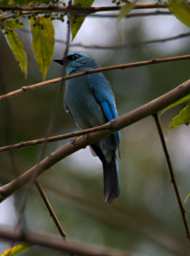
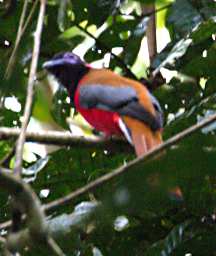
We went to the Gomantong Caves to see the swifts and their nests, and the whole nest harvesting operation in general. The caves are full of bats as well as swifts, and C.K. had said it is quite a spectacle to see the raptors which show up to feed on the bats as they head out for their evening feeding. The swiftlets are out feeding during the day, and the bats are out at night, so I guess you could call that a cave-sharing arrangement.
There are actually two caves, but we only went in the lower one, known as "Simud Hitam" (Black Cave). The other one is larger and is known as "Simud Putih" (White Cave). The names refer to the types of nests in the caves; black saliva nests are found in Simud Hitam, and white saliva nests in Simud Putih. The black nests contain feathers as well as saliva and have to be cleaned before using and are not as valuable as the white ones which apparently don't have to be cleaned. Yech!
On the short walk to the caves we saw some cool birds, notably a Verditer Flycatcher and a Diards Trogon.
 |
 |
| Verditer Flycatcher | Diards Trogon |
The nests are really valuable, and you have to have a license to harvest them. The families who have licenses to harvest them live in quarters just outside the cave entrance, and they don't trust anyone, including each other. There are two guards posted in the Black Cave alone; I presume there are more posted in the White Cave, since it is larger. The caves are guarded 24 hours a day, and the families switch off guard duty.
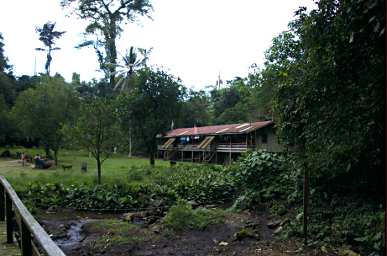 |
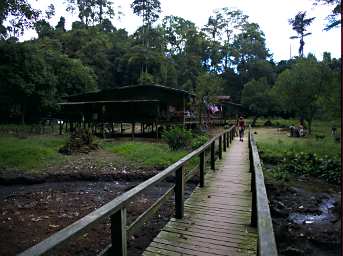 |
| Housing | Housing |
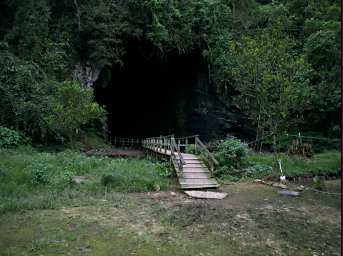 |
| Simud Hitam (Black Cave) Entrance |
C.K. had warned us there were cockroaches all over the cave, in addition to all the bat guano. Dawn opted to go only as far as the cave entrance, as she is pretty freaked out by cockroaches. Were there ever cockroaches! With each step you would either crunch some underfoot, or if you were shining your light at your feet, you could see them scurrying away. When we shined our lights at the cave walls we saw some huge caterpillars or caterpillar-like things, and they looked pretty ominous. We definitely did not have any urge to pick them up and play with them. Unfortunately, we were not supposed to take pictures in the cave, so I didn't get pictures of any of them.
There is a wooden walkway around the edge of the cavern. There is a constant drip of water from somewhere up above, and the constant scurrying noises of the cockroaches and who knows what else across the walkway. The pile of bat poop inside the cave was ... humongous. There are ropes permanently affixed to somewhere up above, which are used to either climb up or more likely to raise platforms for harvesting.
The nests are harvested twice a year -- once early in the breeding season, before the birds have laid any eggs (they make another nest); and once after their young have fledged.
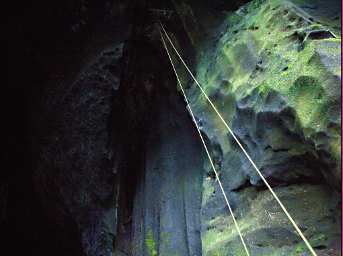 |
 |
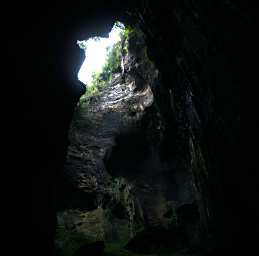 |
| Ropes To Platform | Top Entrance | Top Entrance |
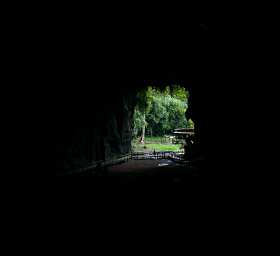 |
| Entrance
for scale, note Dawn standing down there! |
There was a crested serpent eagle hanging around by the parking lot, and a dead bat hanging from one of the nearby trees.
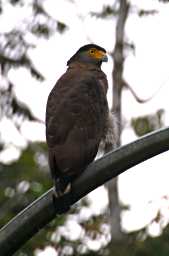 |
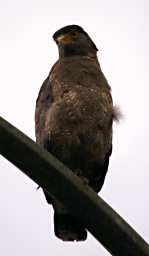 |
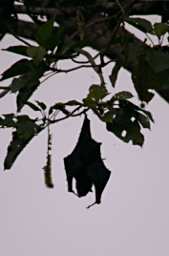 |
| Crested Serpent Eagle | Crested Serpent Eagle | Caves Dead Bat |
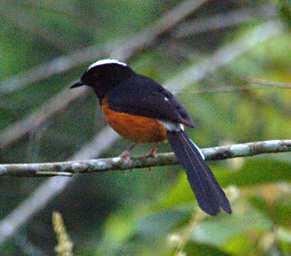 |
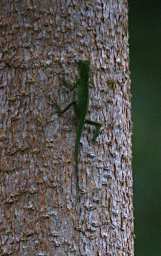 |
| Bird White Crowned Shama | Gecko |
Unfortunately, the great bat exodus and raptor feeding never happened. C.K. said sometimes you didn't see it, and he didn't know why.
So we headed back to Myne Lodge for the night, and the next day we headed to Tabin Wildlife Reserve.